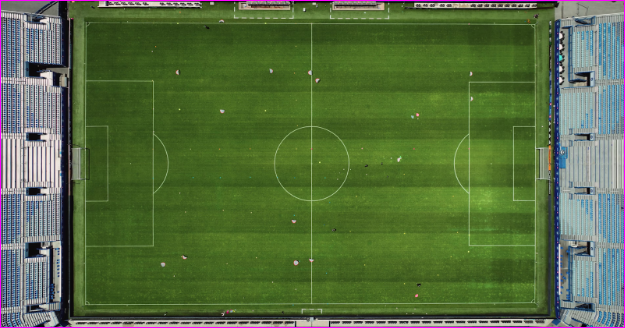
Three rounds in, the league table begins to separate steady contenders from hopeful travelers. Margins are still slim, yet patterns emerge in pressing discipline, set piece craft, and rotation courage. Squads that banked early points now play with calmer pulses and cleaner risk. Chasers already feel the clock. The third matchday rarely crowns anyone. It quietly defines who controls the draw that follows.
Matchday nights are no longer single screen events. Live tables update in pockets and on trains. Second screens light up with official dashboards, analytics threads, and playful detours like mine island login, yet the real signal comes from game states that repeat. Teams that reach 1–0 and lock the middle win more than teams that chase fireworks. The top eight race rewards patience, not spectacle.
The Shape of a Top Eight Candidate
A reliable contender shows three habits by early October. First, build-out patterns survive pressure without panic. Second, transitions defend themselves through spacing rather than last-ditch speed. Third, set pieces deliver quiet equity when open play stalls. The math is simple. Avoid trading chances. Bank restarts. Protect leads. The teams that combine those habits climb in small, relentless steps.
Possession numbers alone do not predict rank. The more telling signs are field tilt and repeatable entries into the box. Compact distances between lines reduce the need for sprint recoveries. Wide players that track on time turn half transitions into harmless passes. It looks boring at first glance. It reads like control on the scoreboard.
Early Green Flags That Usually Stick
- Clean minutes from kickoff to first shot against
- Corners and free kicks that produce at least one clear look per match
- Bench contributions within ten minutes of entry
- Low volume of central giveaways under pressure
- Consistent expected goal edge in tied game states
Clubs Riding Momentum After Three Rounds
Every season creates its own cast, yet the roles feel familiar. One club arrives with ruthless efficiency in both boxes. Another brings high press with disciplined cover. A third rides a goalkeeper in full command and a set piece unit that wins ugly on schedule. Across the league phase, the most durable stories come from teams that accept unglamorous wins. The table respects routine.
Midfield balance drives most of the separation. Double pivots that rotate responsibly allow fullbacks to join without leaving highways behind them. Single pivots with shuttlers can work if wingers contribute. The badge matters less than the spacing. In the top eight race, the best midfields move like hinges rather than magnets.
The Matchday 3 Update That Matters
By now, opponents have film on press triggers and restart schemes. The next gains come from small, visible tweaks. Some sides adjust the angle of the first pass out of the back to hide a fullback under a winger. Others shift corner delivery to near post flicks that invite second balls. Those micro changes keep scout reports honest and add two or three high value moments per game. That is often the difference between a seed and a scramble.
Injuries and minutes management have already entered the chat. The squads that rotate early and smart protect legs for the heavier winter weeks. A ruthless ten-minute hook for a tired fullback earns more points than brave speeches. The table is a fitness log in disguise.
Teams With Work To Do
Chasers rarely lack talent. The issue is clarity. If the first phase under pressure looks improvised, turnovers cluster in the worst corridors. If the block sits too deep for too long, counters arrive with one runner and no support. Fixes are not mystical. Compress vertical distance. Lift a wide player five meters higher to pin the opposing fullback. Choose restarts that fit personnel instead of copying a trend.
The mental game matters. Sides that concede just before half often chase too hard after the break. Smarter teams restart with five slow minutes to reset tempo and pull opponents out. The league phase is a marathon disguised as a sprint. Impulse costs seeds.
What To Watch Between Rounds 3 and 4
- Return speed to structure
How quickly a team snaps back to shape after a broken attack. - Set piece variety
One outswinger, one inswinger, one short routine that actually creates a shot. - Wing control
Ability to trap near the touchline without inviting through balls in behind. - Substitution timing
Changes at minute 58 to 65 beat reactive shifts after damage. - Game state maturity
Fewer frantic crosses when trailing by one with time on the clock.
Two Paths Into the Top Eight
There are always two highways into the upper tier. One path is dominance through chance quality. The other is suppression through sterile control. The best teams blend both, yet a clear identity is enough if execution rarely dips. A high pressing unit that wins the ball in Zone 14 does not need thirty shots. A low event controller that breaks once or twice with purpose does not need chaos. The bracket rewards clarity.
Сonclution
After Matchday 3, the top eight race tilts toward squads that embrace routine excellence over drama. Stable build-out, measured transitions, and honest set piece work outscore raw talent that treats every phase like a highlight hunt. The table will still breathe over the next two rounds. Seeds are not settled. Yet the direction is visible. Keep the middle tight, trust the bench, protect the box, and the league phase opens into favorable paths when knockout traffic begins.

